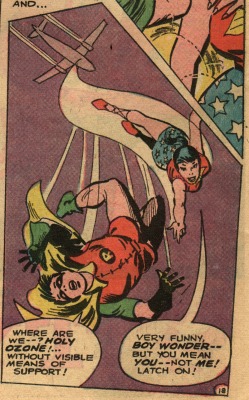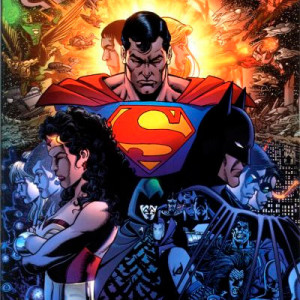I was thinking about a discussion on last month’s Flash #226 and got to thinking about the way religion figures into mainstream comic books. Not the way religious characters are portrayed, but the way the fictional world works. I’m not familiar enough with Marvel (though I can make some guesses based on the presence of Thor), but DC seems to have an “anything goes” cosmology: current scientific theory coexists with the Christian God, Heaven and Hell, with gods and other supernatural beings from various mythologies—some of them made up, like the Lords of Order and Chaos—occupying their own corners of the universe.
That’s probably what you want for a long-term, open-ended shared universe, because it gives you the most opportunities for stories. Want to write about an alien race that lived billions of years ago, or evolved from cats? Check. Have a fallen angel join the Justice League? Check. Tie Wonder Woman’s origin directly to the Greek gods? Check. Use made-up alien gods to explain the Greco-Roman split? Check. Power up half your villains and a handful of heroes as they sell their souls to a devil? Check. Pit the spirit of God’s wrath against a 50,000-year-old immortal ex-caveman? Check. Send some characters to Heaven or Hell, but have others destined to be reincarnated over and over again? Check. Observe the hand of God at the moment of the big bang? Check.
There are a couple of limits. DC seems to avoid ascribing a particular religion or denomination to any of their A-list characters, probably so that readers can just assume it’s their own (kind of like setting a story in “Anytown, USA”). And they avoid direct portrayals of God or Jesus, probably for the same reason. Continue reading →

 “Obviously, he’s a ta’veren!” Katie said. I laughed for a second, but then remembered an interview I’d read about Infinite Crisis. It actually fits.
“Obviously, he’s a ta’veren!” Katie said. I laughed for a second, but then remembered an interview I’d read about Infinite Crisis. It actually fits.